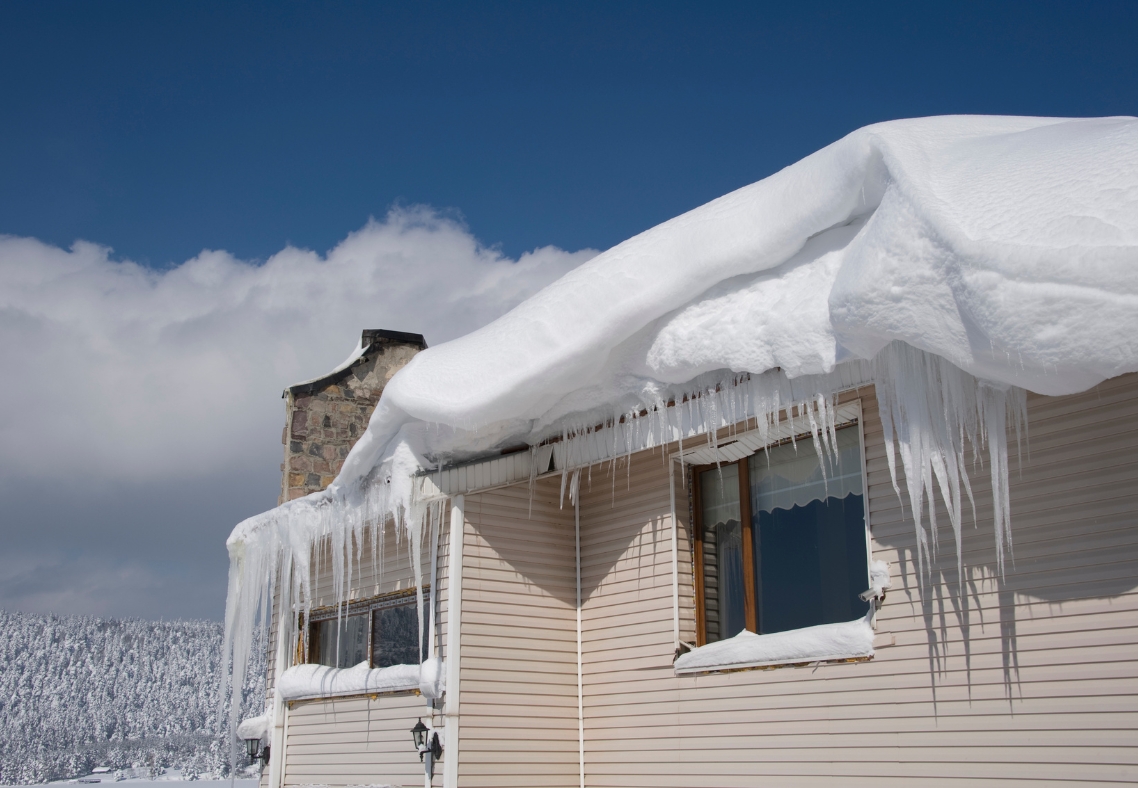What Is The Ice And Water Shield On A Roof?
Roof Right: Exterior Home Remodeling Specialists in Maryland Contact UsSchedule A Free EstimateWhen it comes to protecting your home, the roof is one of the most crucial elements. While most homeowners focus on the visible aspects like shingles or tiles, there is another essential component that goes unseen but plays a critical role in preventing water damage: the ice and water shield. Particularly in areas like Maryland, where winters can be harsh and storms unpredictable, ice and water shields provide a layer of protection that can save your home from leaks, mold, and structural damage. In this blog post, we’ll explore what an ice and water shield is, how it works, why it’s important, and whether you should cover your entire roof with this special underlayment.
Answering The Question: What Is The Ice And Water Shield On A Roof?
What Is an Ice and Water Shield?
An ice and water shield is a type of roofing underlayment, similar in concept to a large piece of rubber tape. It is a three-foot-wide, adhesive-backed material that is installed along the most vulnerable areas of your roof. These areas include the eaves, valleys, around penetrations like chimneys and skylights, and along any wall that meets the roof.
The main purpose of the ice and water shield is to protect these vulnerable areas from water damage caused by accumulated ice and water. This underlayment acts as a self-healing membrane that seals around nails or screws, offering an extra layer of protection that works beneath your shingles.
How Does It Work?
Ice and water shields work by adhering directly to the roof deck, creating a waterproof barrier that protects against leaks and moisture infiltration. Here are the key features that make it so effective:
- Adhesive Backing: The fully-adhered nature of the ice and water shield ensures that it sticks securely to your roof, even in harsh weather conditions like high winds or heavy snowfall. Once applied, it doesn’t shift or move, which means it provides long-lasting protection.
- Self-Healing Membrane: One of the most significant advantages of the ice and water shield is its self-healing properties. When shingles are nailed over the shield, the membrane seals around the nails, preventing water from seeping through these punctures. This self-sealing ability is crucial for stopping leaks in areas where the roof is most prone to damage.
Together, these qualities provide superior leak protection, even in severe weather conditions that are common in Maryland, such as winter ice storms or heavy rain.
Why Do You Need It?
You might be wondering, “Why do I need an ice and water shield when my shingles are supposed to protect my roof from water?” While shingles are indeed the first line of defense, they aren’t entirely foolproof. Water can still get beneath them under certain conditions. Here’s how:
Ice Dams
In Maryland winters, it’s not uncommon for snow to accumulate on your roof. When the sun comes out on a warm day, the snow begins to melt and runs down your roof toward the eaves. However, as the temperature drops again, the water can refreeze, forming ice dams. These dams block the proper flow of melting snow and water, which then gets pushed back up the roof and underneath the shingles, causing leaks. An ice and water shield prevents this by creating a watertight barrier under your shingles. Even if water sneaks underneath the shingles, it won’t penetrate the shield, protecting your home from leaks and water damage.
Severe Storms
Maryland also experiences severe weather, from heavy rains to windstorms and even hurricanes. During these events, wind can lift shingles or push rainwater under the roofing material, leaving your home vulnerable to leaks. An ice and water shield helps to prevent water from seeping into these areas, providing an additional layer of defense against storm damage. Whether it’s preventing ice dams or protecting your home from strong winds and rain, an ice and water shield offers peace of mind, knowing your roof is safeguarded against the elements.
Should You Cover Your Entire Roof with Ice and Water Shields?
While the ice and water shield provides excellent protection, covering your entire roof with it is not always necessary. In most cases, it’s more effective to apply the shield to the roof’s vulnerable areas.
Vulnerable Areas Include:
- Eaves and Roof Edges: The most common area for ice dam formation and water pooling.
- Valleys: These are the areas where two roof sections meet, forming a natural pathway for water flow. Valleys can be prone to water buildup and leaks if not properly protected.
- Chimneys and Skylights: Any roof penetrations, like chimneys or skylights, are potential entry points for water. Applying an ice and water shield around these areas will prevent water from seeping in.
- Low-Pitched Roofs: If your roof has a low slope, it may be more susceptible to water pooling. The ice and water shield can help protect against leaks in these areas.
Why Not Cover the Whole Roof?
While it might seem logical to cover the entire roof with an ice and water shield for maximum protection, doing so could cause more harm than good. Covering your entire roof with this material creates a vapor barrier, which can trap moisture between the roof deck and the underlayment. This trapped moisture can lead to condensation and water damage over time. The roof deck needs to breathe, allowing moisture to escape naturally. If you do cover the entire roof with an ice and water shield, you must install proper attic ventilation to prevent condensation buildup.
Maximize Protection Without Overdoing It
In most cases, a well-placed ice and water shield in critical areas will provide enough protection to prevent leaks and water damage. The material is designed to work with other parts of your roofing system, including shingles, ventilation, and gutters. When used correctly, it acts as a secondary line of defense, ensuring that water doesn’t penetrate your home, even in Maryland’s tough weather conditions.
Contact Roof Right For Ice and Water Shield Installations In Maryland
At Roof Right, we understand the importance of protecting your home from Maryland’s harsh winters and unpredictable storms. Our team, based in Hampstead, MD, of experienced roofing professionals is ready to install an ice and water shield on your roof to ensure that your home is fully protected from leaks, ice dams, and water damage. Whether you’re replacing your roof or looking to add an extra layer of protection, we’ve got you covered. Don’t wait until water damage becomes a problem—Contact Roof Right today to schedule a consultation for ice and water shield installation. Let us help you protect your home with high-quality roofing solutions tailored to your needs!
Areas We Serve
If you're looking for a roof contractor in Maryland, give Roof Right a call today at (410)-374-5923 to schedule an appointment!
Carroll County
Howard County
Clarksville, Columbia, Elkridge, Ellicott City, Fulton, Jessup, Laurel, Woodstock
Montgomery County
Baltimore County
Baldwin, Bradshaw, Carney, Cockeysville, Glen Arm, Hunt Valley, Jacksonville, Kingsville, Lutherville, Nottingham, Overlea, Owings Mills, Parkton, Parkville, Perry Hall, Phoenix, Pikesville, Reisterstown, Sparks, Timonium, Towson, White Marsh

